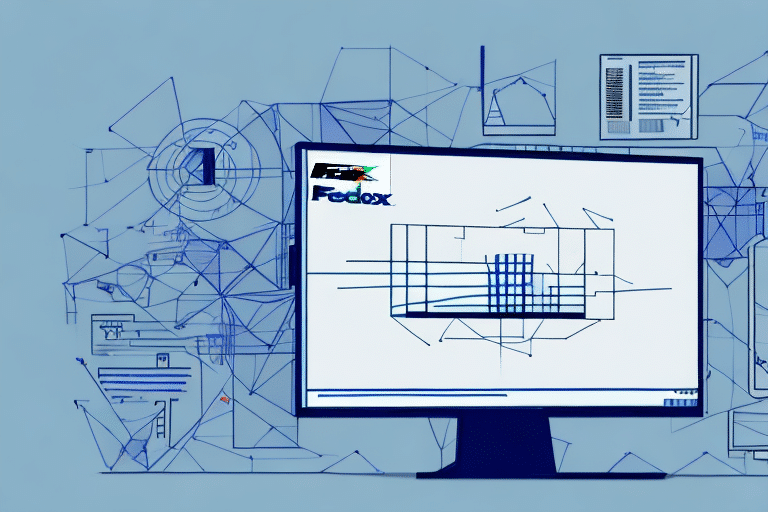Understanding the Importance of Analyzing Your FedEx Volume
Shipping is a critical component for many businesses, influencing both operational efficiency and customer satisfaction. Utilizing tools like FedEx Volume Analyzers can provide a comprehensive view of your shipping activities, enabling you to optimize costs and improve service quality. Analyzing your FedEx volume assists in identifying trends, streamlining processes, and uncovering valuable insights that drive informed decision-making and long-term savings.
Cost Optimization
By scrutinizing your shipping data, you can detect areas of overspending, such as costly services or inefficient shipping routes. Adjusting your strategies based on these insights can lead to significant cost reductions and enhance your bottom line.
Enhanced Customer Service
Understanding shipping volumes allows you to anticipate customer demand more accurately. This proactive approach ensures timely deliveries, reducing delays and boosting customer satisfaction and loyalty.
Types of FedEx Volume Analyzers
FedEx offers two primary types of Volume Analyzers: Standard and Comprehensive. Each serves different business needs based on the depth of data analysis required.
Standard Volume Analyzer
The Standard Volume Analyzer provides essential insights into your shipping volume, suitable for small to medium-sized businesses with moderate shipping needs.
Comprehensive Volume Analyzer
The Comprehensive Volume Analyzer offers advanced data analytics features, ideal for larger businesses with high shipping volumes seeking detailed insights into their shipping patterns.
Choosing the Right Analyzer
When selecting between the Standard and Comprehensive options, consider your business size, shipping volume, and the level of detail required for effective analysis. Additionally, evaluate the cost implications to ensure the chosen analyzer aligns with your budget and provides a favorable return on investment.
Connecting Your Shipping Data to FedEx Volume Analyzers
Integrating your shipping data with FedEx Volume Analyzers is essential for accurate analysis. This can be achieved through the FedEx Reporting Online platform using CSV files or by partnering with a data provider for direct connections.
Data Accuracy and Preparation
Before initiating the connection, ensure your shipping data is accurate and up-to-date. Reliable data is crucial for generating meaningful insights and making informed strategic decisions.
Utilizing Analysis Insights
Post-integration, leverage the analyzer's insights to optimize shipping operations. For instance, identifying cost-effective shipping routes or opportunities to consolidate shipments can lead to substantial savings and efficiency improvements.
Optimizing Your FedEx Volume Analysis
To maximize the benefits of FedEx Volume Analyzers, implement the following optimization strategies:
- Regular Strategy Reviews: Periodically evaluate your shipping strategies to uncover new cost-saving opportunities.
- Leverage Analyzer Insights: Use the data provided to refine your shipping volumes and operations.
- Assess Operational Changes: Continuously monitor how adjustments in your operations impact your shipping volume.
- Prioritize Improvement Areas: Regularly review analyzer reports to identify and focus on areas needing enhancement.
Additionally, account for seasonality in your shipping volume. For businesses experiencing peak periods, such as the holiday season for retailers, analyzing shipping trends helps in preparing adequate resources and strategies to handle increased demand efficiently.
Best Practices for Managing FedEx Volume Analysis Results
Effectively managing the results from your FedEx Volume Analyzer involves adopting several best practices:
- Consistent Review: Regularly examine Volume Analyzer reports to detect shipping volume trends.
- Set Up Notifications: Configure alerts for significant events like rate changes, unusual volume spikes, or modifications to shipping rules.
- Automate Reporting: Streamline your reporting processes through automation to enhance team productivity and save time.
Comparing your shipping volume against industry benchmarks can also provide perspective on your performance relative to competitors. Sharing Volume Analyzer reports with key stakeholders fosters a culture of transparency and ensures alignment across different departments within your organization.
Overcoming Common Challenges in Analyzing FedEx Volume
While FedEx Volume Analyzers are powerful tools, businesses may encounter several challenges during analysis:
Data Inaccuracies
Inaccurate data can undermine the reliability of your analysis. To counter this, regularly audit your shipping data and correct any discrepancies promptly. Additionally, ensure that the analyzer is configured to match your business's specific requirements.
Understanding Data Metrics
A clear comprehension of the metrics used in the analyzer is vital. Collaborate with your team and utilize support resources to accurately interpret the data in alignment with your business objectives.
Identifying Trends and Patterns
Recognizing trends and patterns can be challenging without the right tools. Employ advanced analytics tools that can sift through your shipping data to highlight significant trends, enabling you to make strategic adjustments to your shipping operations.
Advanced Techniques for Analyzing Your FedEx Shipping Data
Beyond basic analysis, advanced techniques can further enhance your understanding of shipping data:
Data Segmentation
Segment your shipping data by SKU or customer to gain deeper insights into shipping patterns, optimize pricing strategies, and enhance customer service.
Predictive Analytics
Utilize predictive analytics to forecast future shipping trends based on historical data. This approach allows you to adjust inventory levels, minimize shipping costs, and boost overall operational efficiency.
Continuous Data Review
Regularly analyze various aspects of your shipping data, such as delivery times, common shipping errors, and customer feedback. Continuous review facilitates data-driven decisions that refine shipping operations and elevate customer satisfaction.
Key Metrics to Monitor in Your FedEx Volume Analysis
Monitoring specific metrics is essential for a comprehensive analysis of your FedEx volume:
Average Package Weight and Cost
Tracking the average weight and cost per package helps identify cost-saving opportunities and optimize packaging strategies.
Total Package Volume
Assessing the total number of packages shipped provides a clear overview of your shipping activities and aids in capacity planning.
Delivery Time
Monitoring delivery times highlights inefficiencies in your shipping process, allowing for timely adjustments to enhance performance.
Lost or Damaged Packages
Keeping track of lost or damaged packages helps identify areas for improvement in handling and transportation, reducing these occurrences over time.
Return Costs
Analyzing the cost of returns can uncover patterns or issues in products or shipping processes, enabling strategies to minimize return rates and associated expenses.
For more detailed insights on key shipping metrics, refer to the Panjiva Supply Chain Metrics Guide.
Enhancing Shipping Efficiency Through Volume Analysis
FedEx Volume Analyzer offers actionable insights to streamline your shipping operations. By identifying traffic patterns, adjusting for peak seasons, and pinpointing problematic areas in the shipping process, you can enhance efficiency, cut costs, and improve overall shipping performance.
Traffic Pattern Identification
Understanding traffic patterns allows you to optimize shipping schedules and routes, ensuring timely deliveries and reducing transit times.
Seasonal Adjustments
Preparing for peak shipping seasons by analyzing volume trends ensures that your business can handle increased demand without compromising service quality.
Problem Area Identification
Pinpointing issues within the shipping process enables targeted improvements, enhancing overall operational efficiency.
Integrating Other Data Sources with FedEx Volume Analysis
Combining FedEx Volume Analyzer with other data sources can provide a more holistic view of your shipping operations:
Customer Service Feedback
Incorporating customer feedback helps identify service areas that require enhancement, directly impacting customer satisfaction.
Sales Data
Linking sales data with shipping data offers insights into demand patterns, aiding in inventory management and forecasting.
Additional Data Sources
Integrating various data points enables data-driven decision-making, optimizing costs and improving shipping strategies.
Comparing Different Shipping Carriers Using FedEx Volume Analyzer
FedEx Volume Analyzer not only provides insights into your FedEx shipments but also facilitates the comparison of different shipping carriers. By evaluating performance metrics across carriers, businesses can make informed decisions about the most suitable shipping partners for their specific needs.
For a comprehensive comparison of shipping carriers, consult resources such as the Inbound Logistics Shipping Carriers Guide.
The Future of Shipping Analytics with FedEx Volume Analysis
The landscape of shipping is continually evolving, with increasing demands for speed, efficiency, and cost-effectiveness. FedEx Volume Analyzers and advanced shipping analytics tools will play an integral role in helping businesses adapt to these changes. By leveraging these technologies, businesses can anticipate market trends, optimize operations, and maintain a competitive edge in the fast-paced economy.
Case Studies: Successful Implementation of FedEx Volume Analysis
Real-world examples demonstrate the effectiveness of FedEx Volume Analyzers in optimizing shipping operations and reducing costs:
- XYZ Corporation: By implementing FedEx Volume Analyzer, XYZ Corporation identified a significant spike in shipping volume during the holiday season. Adjusting their shipping schedules based on these insights led to a 25% reduction in average cost per package.
- ABC Enterprises: Integrating customer service feedback with Volume Analyzer data, ABC Enterprises discovered that package weight significantly impacted customer satisfaction. By optimizing package weight, they achieved a 20% increase in customer satisfaction rates.
Conclusion
FedEx Volume Analyzers are invaluable tools for businesses aiming to optimize their shipping operations and control costs. By adhering to best practices, employing advanced analysis techniques, and integrating diverse data sources, businesses can fully harness the potential of these analyzers. Implementing FedEx Volume Analysis empowers organizations to make informed, data-driven decisions that enhance efficiency, reduce expenses, and elevate customer satisfaction.






















